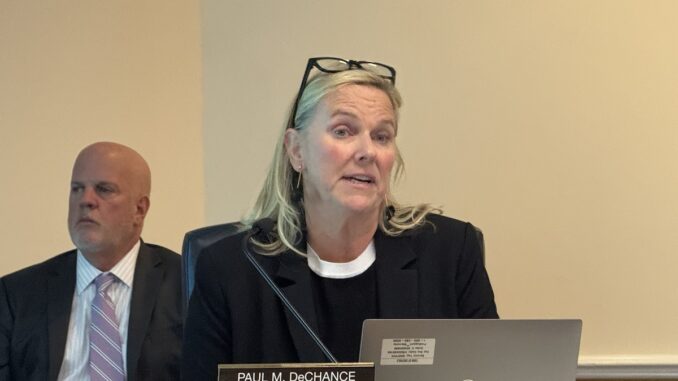
Southold Town Board unanimously adopted a priority-driven “subsidy framework” and “implementation plan” for its Community Housing Plan during its regular meeting June 10.
Its described intent is to increase access and opportunities to fund housing projects in Southold Town and Greenport Village. The village board would be able to opt into the adopted framework and implementation plan through a resolution.
The Community Housing Fund, which is designed to support the housing plan, was established by East End voters in November 2022 under the Peconic Bay Region Community Housing Fund Act. The fund is supported by a 0.5% real estate transfer fee tax paid by the purchaser. Suffolk County began collecting funds on April 1, 2023.
In April 2024, Southold had a combined $2.5 million in funding earmarked for affordable housing expenditures.
The Community Housing Plan’s purposes include: providing financial assistance to first-time homebuyers who are Southold Town residents with a grant or loan; increasing community housing inventory; rehabilitating existing buildings for housing use; compiling interest in real property in existing housing units; and providing housing counseling services from nonprofits authorized by the U.S. Department of Housing and Urban Development.
Below, The Suffolk Times breaks down the adopted subsidy framework and implementation plan.
Subsidy framework
The subsidy framework for contractors provides for a base subsidy of $55,000 per unit for “essential financial support for qualifying projects.”
For example, a project with 10 one-bedroom rental units would receive $550,000 in base subsidy funds, as the subsidy formula is the $55,000 base subsidy multiplied by the number of units.
Additional bonuses may be applied to projects that target designated priority areas such as properties with adaptive reuse, affordable homeownership opportunities, unit-size diversity, proximity to public transit and more.
The subsidy framework also notes that the town may provide “in-kind support” to affordable housing projects, including reduced costs for land, sanitary flow credits, or infrastructure support such as access to essential services.
“These in-kind subsidies play a critical role in reducing overall development costs, making projects more financially viable, and facilitating the creation of sustainable, affordable housing,” the subsidy framework states.
Breakdown of priority-area bonus structure
Certain priority-area structures have the potential to receive additional support bonuses. They are broken down as follows:
- For adaptive reuse of an existing structure, a project would receive a 50% bonus to support the logistical and financial complexities of repurposing existing buildings while preserving the community’s character.
- Projects that serve up to 80% of the area median income, also known as AMI, would receive a 20% bonus to offset reduced revenue for developers. The intent is to ensure housing is accessible to lower-income households.
- Projects that upgrade the property’s septic system would receive a 20% bonus.
- Projects that include affordable homeownership options would receive a 20% bonus to incentivize long-term stability and community investment.
- Projects with units of four or more bedrooms would receive a 15% bonus. Projects with units of two to three bedrooms would receive a 10% bonus.
- Projects that include solar panels or other renewable energy sources and/or meet green building standards such as LEED, Passive House or ENERGY STAR, would receive a 10% bonus.
- Projects within a half-mile of public transit would receive a 10% bonus.
For the hypothetical 10, one-bedroom rental unit project described earlier — if it is an adaptive reuse of an existing building that includes a septic system upgrade and is close to public transit — would receive $440,000 in total bonuses.
Implementation plan
The implementation plan was established to accept applications for project funding, reviewing them for approval and allowing post construction monitoring.
“It’s really a well-thought out, vetted process,” councilwoman Jill Doherty said of the plan. “This is just the beginning, as we’ve said, that we have the framework of the housing and we’ve got to put the wheels on now [for] the framework; and this is just a couple of spokes.”
Next steps for the Community Housing Plan will include a review of subsidies available to individuals in need of attainable housing, Ms. Doherty said.

